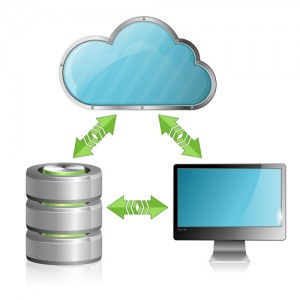Why Combining UCaaS and CCaaS Is Great for Business
Your contact center should offer more than simple answers. It’s the mothership of your customer experience, but its processes require integrations for optimal performance. A unified communication platform can empower collaboration between your contact center and the organization to provide a more seamless customer experience. But why?
Unified communications as a service (UCaaS) can be combined with a contact center as a service(CCaaS) to improve the customer experience at large. Before diving into exactly how these improvements occur, it’s important to understand exactly what UCaaS and CCaaS are in your organization.
UCaaS and Contact Center as a Service: The Basics
While both UCaaS and CCaaS provide essential functions for your operation, they have distinct differences in how they accomplish results.
- UCaaS: a cloud-based business collaboration solution that consolidates various communication channels such as video, voice, messaging, and presence on a unified platform.
- CCaaS: an advanced cloud-based call center tool for empowering a business’s omnichannel customer communication, whether it be by phone, SMS, online chat, or email.
At a glance, you can think of UCaaS as an internal resource for improving communication and CCaaS as a way to bolster external communication with the customer.
The emergence of online resources for call centers revolutionized contact centers — creating contact centers as services to benefit the entirety of the customer journey. This prompted companies to adopt new ways to communicate externally and internally — but all too often, businesses are lagging behind in one of these departments.
Better Together: Why Unify UCaaS and CCaaS?
Combining your UCaaS and CCaaS offers a plethora of unique benefits.
Besides the avoidance of integration headaches when working with multiple companies, there are also cost advantages. Minimizing administrative burden frees up IT staff to focus on core competencies and strategic opportunities. Additionally, you can avoid weighty upfront capital outlays because a contact center as a service is a more predictable cost structure that centers around regular recurring operating expenditures.
1. Access to Information
Contact center employees gain seamless access to contextual information regarding a customer, allowing them to spend more time addressing the problem rather than familiarizing themselves with a customer’s situation or past interactions with the business.
As a customer, this is a huge plus in the customer experience department. Nothing is more frustrating than contacting a contact center for the second or third time and being forced to re-explain the predicament.
2. Meet Customers on Preferred Platforms
Another benefit of combining UCaaS and CCaaS is the ability to readily access and communicate engagement data with these platforms. This data provides valuable insights to where and when a customer engages with your company — whether it be on their phone, SMS, chat, email, and beyond.
Your contact center agents can leverage this data to easily communicate with customers on their preferred platform or device to better the customer experience and provide satisfying services faster.
3. Less Stress on Your Team
Learning new systems can inevitably slow operations and create workflow issues — especially when there are more multiple platforms to familiarize oneself with. Employees have enough on their plate when juggling multiple contact center customers — and keeping mental tabs on platform differences can inevitably affect performance.
Mitigating frustrations with your team is difficult to measure, but it can have an immense effect on the customer experience. Making the lives of your employees simpler and less confusing with combined UCaaS and CCaaS systems will certainly improve work satisfaction and in turn — customer satisfaction.
4. Seamless Coordination
Contact center agents can leverage collaboration tools within the UCaaS to harness rapid answers to inquiries that provide a fast and reliable resolution. Even on their own, contact centers as a service offer incredible business benefits. But, combining these external communication systems with your internal contact center as a service platform allows seamless coordination to handle problems efficiently and quickly.
5. Combined Analytics
Contact center data is a treasure-trove of vital information that can help to improve the customer experience and create advocates for your company. Unified analytics offer a comprehensive view of your business communications along with vital customer engagement systems.
As a business leader, you can highlight ways to adjust the customer experience in meaningful ways — creating a more valuable omnichannel approach.

Enhance Communication Stack By Combining UCaaS and CCaaS
Today, moving communication to the cloud is a must. It’s a flexible environment capable of pushing companies forward and creating new opportunities for collaboration, productivity, and an enhanced customer experience.
- Strengthen Your Data Access: Gain visibility on the entire spectrum of your customer journey along with your business process in a unified platform. Improve decision-making, give employees more accessibility, and enhance your analytics across the board.
- Unmatched Collaboration: Ease communication and collaboration between contact center agents and specialists, internal department heads, and vital sources for a more unified environment. Remove siloes to solve customer problems faster and create a landscape that facilitates sales opportunities.
- Quick Integrations: The cloud makes implementing new tools, artificial intelligence (AI), and automation easier than ever before.
- Boost Customer Experience: Combining UCaaS and CCaaS systems allows agents to work together more effectively, and engage with customers faster and smarter than ever. Additionally, agents can view the entire customer journey from a birds-eye view, easing pain points and providing solutions along the way.
- Cost Reduction: Unifying these systems means less maintenance and less hassle — allowing IT specialists more time to focus on improving processes.
Supercharge your company’s communication stack and improve customer experience across the board by combining your UCaaS and CCaaS systems. Give agents, IT leaders, and even customers the resources needed to grow your business and boost sales today. Cost Reduction:
4 Ways Your Business Can Benefit From SD-WAN
In today’s business landscape, companies need to adapt to the latest technology or risk losing valuable sales to their competition. From high-speed fiber-based internet to Contact Centers as a Service (CCaaS), businesses across the United States are improving their performance with modern, efficient services.
Another valuable service for businesses is a software-defined wide area network (SD-WAN). SD-WAN services optimize software and applications necessary for business operations because traditional WANs no longer hold up to today’s connectivity needs. Still on the fence about switching your business over to SD-WAN? Let’s dive into SD-WAN and its four significant benefits.
What Is SD-WAN?
Business SD-WAN solutions are essential for optimizing online traffic. SD-WAN services move traffic away from slow, hardware-based storage solutions on traditional wide area networks (WANs) to the preferred method of storage: the cloud. “The cloud” refers to servers that are accessed over the internet rather than computer hard drives. Software and databases can run through the cloud, which frees up storage space, and ultimately allows processes to run smoother and faster.
Why Don’t Traditional WAN Systems Work Anymore?
Original WAN systems work by hosting servers at a data center and connecting additional users to the original server. An example of this is a traditional internet router you may have in your home. Older WAN systems were not designed to accommodate modern cloud traffic.
Therefore, WAN systems often experience backhauls because they can’t meet today’s traffic and data demands. These backhauls lead to delays, lost productivity, and poor user experience.
As businesses continue to adopt software as a service (SaaS) and infrastructure as a service (IaaS) on multiple clouds, companies need to switch to SD-WAN to provide high-quality user experiences.
If businesses keep their traditional WAN services, they will experience an incompatible traffic explosion when they mix cloud-based services and hard-drive-based services. This traffic incompatibility results in:
- Poor user experience
- Decreased employee productivity
- Rising WAN expenses
- Increased security threats
- Unpredictable application performance
That’s where SD-WAN comes in. Since SD-WAN systems are optimized for the cloud, businesses no longer have to deal with frustrating backhauls and poor application performances. SD-WAN allows enterprises to securely connect users to applications by utilizing any combination of transport services, including:
- Long-Term Evolution (LTE)
- Multiprotocol Label Switching (MPLS)
- Broadband internet
4 Major SD-WAN Benefits for Business
SD-WAN benefits are plentiful, so it’s easy to understand why so many businesses are making the switch. SD-WAN is the answer to all of the issues and difficulties businesses experience when they try to mix cloud services and traditional WAN.
SD-WAN services can be set up quickly, and your business will immediately see the benefits roll in. SD-WAN offers a multitude of advantages for businesses, but the four significant benefits that attract business owners are:
1. Increased Security
When businesses mix traditional data centers and cloud operations, they experience security concerns. The two different systems are not compatible, so data becomes vulnerable when traffic moves across systems. As more and more software and data exist on the cloud, protecting traffic for business-critical operations is vital.
One of the best perks of SD-WAN is that it comes with built-in security. Integrated security features help prevent things such as:
- Lost data
- Downtime
- Legal liabilities
- Regulatory violations
Customers and clients can rest at ease knowing their private information is secure in the cloud with SD-WAN services. Integrated threat protection features are enforced at the right time and place, so businesses can catch security breaches before they happen.
2. Improved Performance
SD-WAN simplifies the management of networking services for small businesses. Simplifying operations from a central portal results in ease of performance. SD-WAN can even be configured to prioritize critical traffic and real-time services such as Voice over Internet Protocol (VoIP).
Traffic for high-demand applications gets routed through the fastest connection. Prioritizing the most critical traffic allows SD-WAN networks to reduce standard performance issues such as lagging and jittering.
With SD-WAN, fast networks are highly available and predictable, so businesses can rely on consistent performance when it matters most.

3. Lower Costs
One of the main reasons businesses switch to SD-WAN is because of how cost-effective it is. Since SD-WAN services utilize technology that you already have, such as ethernet or WiFi, your business doesn’t need to spend money on complicated new equipment or IT services.
Essentially, SD-WAN helps you get the highest performance out of the connectivity you already have, so there is no need to pay for extreme IT involvement or new overhead costs. SD-WAN solutions only use the circuits they need to get the job done.
SD-WAN leverages low-cost local internet access, reduces unnecessary traffic, and provides direct cloud access. The automated management feature on SD-WAN systems removes the need for network engineers to make system changes and reduces the effort needed to maintain a network. All of these modern functions reduce usage and labor costs.
4. Optimized Cloud Experience
Businesses and the general public are utilizing cloud storage more and more each day. The average person who used to store digital photos and documents on computer hard drives now can easily access them through cloud applications such as:
- Google Photos
- Dropbox
- Microsoft OneDrive
- Google Drive
- Apple iCloud
- And more
SD-WAN is continually being revamped to provide optimized connectivity over the cloud. SD-WAN is appealing because it dramatically simplifies cloud connectivity compared to traditional WAN services. It can automate simple tasks and organize complex tasks in the most efficient way.
Gone are the days of needing to be connected to a centralized data center. With SD-WAN for business, employees can access cloud applications remotely to be productive from any location.
Optimize Your Business With SD-WAN Today
As you can tell, there are numerous reasons why businesses across the country are switching from traditional WAN services to SD-WAN. Don’t let your competition get ahead. Instead, take advantage of cost-effective SD-WAN services that will increase your security and performance.
At Integrated Communications, we partner with the most trusted SD-WAN providers in North America. Are you ready to make the switch? Contact us today to set up a free telecommunications audit. We will assess your company’s performance and help you determine the best path forward for your business network.
Public Cloud Concerns: Myth vs. Reality
 Despite the increasing popularity and adoption of cloud services, many misperceptions still abound about their potential disadvantages. Companies considering a cloud service purchase should carefully sort through both the hype and the myths about cloud computing before making a purchasing decision.
Despite the increasing popularity and adoption of cloud services, many misperceptions still abound about their potential disadvantages. Companies considering a cloud service purchase should carefully sort through both the hype and the myths about cloud computing before making a purchasing decision.
Cloud misperceptions vary, but three primary myths have emerged that might cause IT decision makers to stop and reconsider their cloud purchase plans. However, the reality behind these myths should give buyers reassurance when it comes time to make a cloud decision.
The Data Center Death Knell Myth
With data and functionality increasingly moving to cloud services, IT employees may be concerned about being replaced by the very technologies they choose to deploy.
While this isn’t a completely unfounded concern, the reality is that cloud services are largely being adopted by younger and smaller companies that don’t already have in-house IT departments. The ability of the cloud to provide IT services that such companies would otherwise have to build from scratch is one of its primary advantages.
For companies that already have an established IT team, cloud services aren’t likely to steal away jobs anytime soon. Companies may move some of their data and processes, particularly storage, to the cloud, but most companies will continue to house critical data on private networks in a hybrid approach. In-house IT will continue to be needed to support private network operations.
The Security Myth
One of the most common and persistent misperceptions about the cloud is that it opens up companies to a variety of new security risks. The thought of having data leave the safety of the corporate security fortress and travel via potentially unprotected connections to a public cloud creates concern over attacks on a company’s critical data.
In reality, because of their singular focus on providing data services, cloud providers often have some of the best security experts on staff who focus entirely on predicting security vulnerabilities and protecting against attacks on client data.
The Data Black Hole Myth
Some companies worry that once they allow their data to transfer to a cloud service, they will lose control over it or have difficulty moving it or getting it back. This myth likely circulates because in the past, it had some truth to it. Making a cloud transition sometimes meant data was locked in with the chosen provider.
But trends surrounding this cloud concern are changing. Some of the larger cloud providers offer tools that make it easier to control and move data when the company chooses. Amazon’s Snowball appliance allows customers to easily migrate data, and Velostrata introduced an appliance that eases the migration of data to and from the public cloud.
Making an Informed Cloud Purchase
Cloud services provide many benefits to companies that want to improve their operations and increase efficiencies. IT decision makers have a responsibility to choose a cloud service that protects the company’s data assets and provides the right services for its users.
All technologies have pros and cons. Deciphering myth from reality surrounding security, data availability, and future IT employment can help decision makers make the right cloud choice.
Why BaaS Is Becoming Tomorrow’s Standard in Data Storage
 Using the cloud for secure Backup as a Service (BaaS) data storage is rapidly becoming a quality that potential clients look for when evaluating business partners. In a high energy business environment with ever increasing dependency on information and data storage, the consequences of data loss can be catastrophic.
Using the cloud for secure Backup as a Service (BaaS) data storage is rapidly becoming a quality that potential clients look for when evaluating business partners. In a high energy business environment with ever increasing dependency on information and data storage, the consequences of data loss can be catastrophic.
How It Works
Online backup systems operate by using agent software to compress designated data files, folders, and drives, then encapsulate the compressed data in encrypted packets and transmit them to an off-site facility where the data is stored.
The initial backup can be time consuming, but in subsequent sessions backup systems save bandwidth and time by using algorithms to scan the selected folders and drives and focus only on data files that have been added or changed since the last update.
In-House Backup Difficulties
Backing up data is nothing new in the business world. Traditionally it has been a function performed as time allowed by IT professionals within the company, and the data was stored on location. There are a number of drawbacks to this method. Three of the more prevalent are:
- cost of IT personnel,
- cost of equipment, and
- potential for total data loss.
Online backup systems provide viable solutions via the cloud to each of these persistent problems with in-house data backup.
Labor Savings
Once the agent software has been installed, the company’s IT professionals need only designate the material to be backed up and schedule a recurring time window for the backup to take place. After that, the process becomes automatic. No further active participation is needed on the part of employees. The result is less manpower and less labor cost.
Infrastructure Savings
The savings in equipment cost is immediately obvious. Eliminating the need to purchase, keep, and continuously update data storage equipment translates to a great deal of savings even after the cost of the online backup is taken into account.
Reduced Risk of Total Loss
One of the more often overlooked advantages of online backup is the reduction of total data loss risk. When data is backed up and kept on location, the original data and the backed up data are both at risk if the building is somehow destroyed. If the backup data is stored off-site, as is the case with an online backup system, the destruction of the business building does not mean that all of the business’s vital data is forever gone.
Looking Forward to BaaS and the Cloud
Any enterprise that does business over many years will learn that suffering data loss is inevitable. The deciding factor between data loss being a mere inconvenience or a serious financial disaster will depend on how well prepared a company is for the problem.
It should be noted that as the business field of play changes, the cloud becomes more essential in daily operations. Businesses that fail to adapt to the ever increasing influence of the cloud will find themselves left behind. Existing and prospective clients are becoming more conscious of whom they do business with. In increasing numbers, potential businesses are looking at survivability when choosing their partners.
Weighing the Pros and Cons of the Cloud
 Getting involved with the cloud is a popular proposition when looking at acquiring new technology. A company should consider how cloud technology relates to the business as well as current regulations before moving to the cloud.
Getting involved with the cloud is a popular proposition when looking at acquiring new technology. A company should consider how cloud technology relates to the business as well as current regulations before moving to the cloud.
Understand the Benefits of the Cloud
Businesses should first consider how a move to the cloud can be beneficial. Customer Relationship Management (CRM) tools, for example, enable employees to view customer interactions so that technicians, sales staff, and customer service agents are aware of how other employees interacted with a customer at certain intervals. Management can also more easily monitor employees from a single dashboard. These actions are difficult to replicate outside of a cloud service.
Understand Any Potential Negatives
Preparations should be made to understand what migration to the cloud will entail as well as what could potentially go wrong. For example, pieces of confidential customer data may be collected and stored in the cloud and will require protection. Confidential company data such as product costs and internal reports will exist in this tool as well, so internal security is also a consideration.
Other factors that should be investigated when searching for a cloud provider include the potential for customer data to be lost or compromised if the system is hacked as well as the actions a company would need to take if the cloud provider suffered a major outage.
Understand Cloud Provider Services
It is important to investigate what a cloud provider does to protect its clients. Pull data from the cloud provider from time to time so that backups are in place in the event that the relationship with the cloud provider ends or the provider takes much longer than the service agreement allows to resolve technical issues when they occur. If data can’t be exported easily from the beginning, that should be a red flag.
There is a lot of good that can come from the cloud. Capital expenses can be reduced or even eliminated and employees will be able to access their data in a variety of ways, among many other benefits. But it is important that a business makes preparations to transition to the cloud so that the company does not experience any pains while growing into the technology.
Three Cloud Choices for Enterprises
 With the growing popularity and use of cloud services, IT administrators continue to face the choice of whether to maintain their network operations in house, or outsource operations to a third party. There are pros and cons to each approach.
With the growing popularity and use of cloud services, IT administrators continue to face the choice of whether to maintain their network operations in house, or outsource operations to a third party. There are pros and cons to each approach.
Administrators must carefully evaluate a company’s needs and requirements to determine if a cloud solution makes sense. Not all cloud services are created equal. When deciding among Public, Private, and Hybrid cloud solutions, cost, capabilities, and security needs should be considered.
Public Cloud
Public cloud offerings are affordable, flexible and easy to access but offer less stringent security capabilities. Security is top of mind for network administrators, who have likely taken notice of recent high-profile data breaches.
Public cloud solutions create an additional point of risk by allowing employees to access information from the cloud from potentially insecure networks. Such breaches cause IT administrators to be cautious about the security risks associated with entrusting sensitive to data to servers they don’t control.
Private Cloud
Private cloud offerings, on the other hand, allow enterprises to maintain a certain level of control of data resources. This control allows enterprises to ensure critical company data is kept secure. Other benefits include the ability to control costs. A careful evaluation of the company’s security position is also crucial to determine what data, if any, can be transported and used via a public cloud, and which must remain within the private network.
Private Cloud solutions also provide the ability to customize and optimize services to fit the enterprise’s specific needs. However, private networks sometimes have limited data access, due to fewer interfaces with existing systems. In addition, private networks require in-house support and maintenance, which costs money and personnel resources.
Hybrid Cloud
Hybrid cloud solutions are a relatively new offering that can give enterprises the benefits of both public and private approaches by allowing enterprises to offload some resources to the public cloud while maintaining control over others. In particular, enterprises may be attracted to the limitless capacity of the public cloud and the ability to buy into that capacity as needed.
With a hybrid solution, companies can take advantage of those benefits, while still selecting which mission-critical data it must keep within the private network in order to protect that data from breaches. While adoption rates are still low for hybrid solutions, research shows an increasing level of interest in such services among enterprises, driven in part by a market that values the ability to customize IT solutions.
Choose Wisely and Succeed
Ultimately, each enterprise must carefully consider current and future needs when selecting a cloud solution. Once these evaluations are made, the company will be in the best possible position to determine which cloud solution best meets needs and requirements.
IoT Market Demands Data Security
 In just a few short years, industry experts predict that the Internet of Things (IoT) will have a tremendous growth explosion. By the year 2020, research suggests 30 billion devices will be connected in a $3 trillion marketplace. Assuring that this avalanche of data is protected by layers of security is paramount to the industry’s success.
In just a few short years, industry experts predict that the Internet of Things (IoT) will have a tremendous growth explosion. By the year 2020, research suggests 30 billion devices will be connected in a $3 trillion marketplace. Assuring that this avalanche of data is protected by layers of security is paramount to the industry’s success.
Soon there will be homes where the front doors unlock with a smartphone, its temperature is controlled remotely, and even the oven is turned on by punching a code. “Smart homes” are already on the technological horizon, but the security features must keep pace for viability.
Consumers own many devices that are not just unencrypted, but with marginal to non-existent security features enabled. Some end users leave the factory-set passwords in place, making illegally accessing a device’s data mere child’s play for the average hacker.
Making IoT Devices Secure
Certain qualities are required in order to make the security on IoT devices effective. The security must:
- Possess cloud capabilities
- Be platform agnostic
- Have the ability to facilitate IoT technological ecosystems
- Be lightweight
The ability to manage security via a cloud platform is a vital component to any implemented system. Cloud management enables manufacturers to patch changes to security configurations once a weak spot is detected – even after consumers purchase the device. The hardware itself can be tethered to private key exchanges to simplify authentication, provisioning, and configuration.
The benefits of utilizing agnostic security platforms are clear. Processing capabilities in IoT devices can enable them to be managed and controlled via the cloud. Transmitting large-scale changes in provisioning, authenticating, and configuring can also be handled at cloud level from a centralized location.
Compact IoT devices with security features embedded at the chip is a practical solution for securing data at the core of the device while still utilizing available space. IoT devices can have private keys already embedded to enhance security. This additional layer of security allows compromised components to be identified as “untrusted” and isolated from the other devices on the network. Default passwords would no longer be necessary once key exchanges are implemented within the hardware to authenticate each device. This also allows them to remain lightweight.
Issues to Overcome with IoT Devices
However, the lightweight, compact size of IoT devices limits the space available for security. Another drawback is the multiple levels of vulnerability when connecting devices or at the data host site of the chip. In addition, the limitations of the processing capabilities on devices manufactured by different companies creates security challenges. At present, consumers must use devices made by the same company in order to link them. Cloud-based connections reduce the necessity of standardizing the processing capabilities of IoT devices.
Most IoT devices aren’t currently enabled for cloud management, which is a potential security pitfall. When devices are all tethered to the cloud, it is a simple fix to patch security vulnerabilities – even when they are in the hands of end users. Devices can communicate more readily with one another when cloud capabilities have been implemented.
The bottom line is that the success of the IoT industry is dependent upon the security that is provided by the technology. To ensure that data protection remains a primary focus in an expanding market, networks and devices must be safeguarded. Enabling cloud management capabilities and security features embedded at the chip level can achieve these results.


